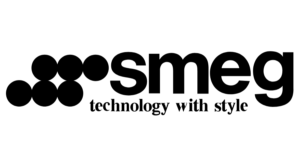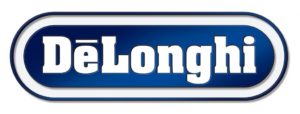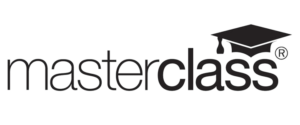Here, we are assuming the Capex outflow is right at the beginning of the period (BOP) – and thus, the 2021 depreciation is $300k in Capex divided by the 5-year useful life assumption. Capital expenditures are directly tied to “top line” revenue growth – and depreciation is the reduction of the PP&E purchase value (i.e., expensing of Capex). The average remaining useful life for existing PP&E and useful life assumptions by management (or a rough approximation) are necessary variables for projecting new Capex. Therefore, companies using straight-line depreciation will show higher net income and EPS in the initial years. A financial professional will offer guidance based on the information provided and offer a no-obligation call to better understand your situation. Finance Strategists is a leading financial education organization that connects people with financial professionals, priding itself on providing accurate and reliable financial information to millions of readers each year.
Excel Depreciation Waterfall Schedule Calculation
The amount an asset is depreciated in a given period of time is a representation of how much of that asset’s value has been used up. Find out what your annual and monthly depreciation expenses should be using the simplest straight-line method, as well as accounting business forms and templates the three other methods, in the calculator below. As you explore these technological solutions, remember that the goal is not just to automate calculations, but to gain deeper insights into your assets’ performance and value over time. With the right technology in place, you’ll be well-equipped to manage your assets effectively and make informed financial decisions for your business’s future. Tracking business expenses, including depreciation, can be made easier with accounting software.
This method is particularly appealing to business owners seeking a more nuanced approach to asset depreciation. Understanding how to compute depreciation empowers business owners to choose the most appropriate method for their specific needs. This knowledge equips entrepreneurs with essential tools to confidently calculate depreciation expenses and gain a clearer picture of their company’s financial health.
The assumption behind accelerated depreciation is that the fixed asset drops more of its value in the earlier stages of its lifecycle, allowing for more deductions earlier on. The straight-line depreciation method gradually reduces the carrying balance of the fixed asset over its useful life. The expenditure incurred on the purchase of a fixed asset is known as a capital expense.
Double Declining Balance (DDB) Method
Neither of these entries affects the income statement, where revenues and expenses are reported. For example, due to rapid technological advancements, a straight line depreciation method may not be suitable for an asset such as a computer. A computer would face larger depreciation expenses in its early useful life and smaller depreciation expenses in the later periods of its useful life, due to the quick obsolescence of older technology. It would be inaccurate to assume a computer would incur the same depreciation expense over its entire useful life.
But in the absence of such data, the number of assumptions required based on approximations rather than internal company information makes the method ultimately less credible. If the data is readily accessible (e.g., a portfolio company of a private equity firm), then this granular approach would be feasible, as well as be more informative than the simple percentage-based projection approach. This formula is best for companies with assets that lose greater value in the early years and that want larger depreciation deductions sooner. For information pertaining to the registration status of 11 Financial, please contact the state securities regulators for those states in which 11 Financial maintains a registration filing. 11 Financial may only transact business in those states in which it is registered, or qualifies for an exemption or exclusion from registration requirements.
- After market research, it comes across a fully automated machine that can produce up to 1,500,000 in its complete life cycle.
- Accelerated depreciation methods, like the declining balance approach, allocate a larger portion of an asset’s cost to depreciation expense in the earlier years of its useful life.
- Instead of realizing the entire cost of an asset in the year it is purchased, companies can use depreciation to spread out the cost of an asset for accounting purposes over a period of years (equal to the asset’s useful life).
- Different methods of asset depreciation are used to more accurately reflect the depreciation and current value of an asset.
- Consult with a tax professional to optimize your depreciation strategy for tax benefits while complying with regulations.
The amount of depreciation you can claim each year depends on the depreciation method you use and the asset’s useful life, so it’s essential to understand both financial reporting and tax depreciation rules. Emerging technologies like AI and machine learning are beginning to impact depreciation calculations. Consider using this method when asset depreciation is more closely related to usage than time, or when production or usage varies significantly from year to year.
Types of Depreciation With Calculation Examples
It’s also beneficial when you need to match depreciation expenses with actual asset utilization. On the balance sheet, depreciation expense reduces the book value of a company’s property, plant and equipment (PP&E) over its estimated useful life. This formula is best for companies with assets that will lose more value in the early years and that want to capture write-offs that are more evenly distributed than those determined with the declining balance method. The four depreciation methods include straight-line, declining balance, sum-of-the-years’ digits, and units of production. Here are four common methods of calculating annual depreciation expenses, along with when it’s best to use them. The above example uses the straight-line method of depreciation and not an accelerated depreciation method, which records a larger depreciation expense during the earlier years and a smaller expense in later years.
The declining balance method is a type of accelerated depreciation used to write off depreciation costs earlier in an asset’s life and to minimize tax exposure. With this method, fixed assets depreciate more so early in life rather than evenly over their entire estimated useful life. Businesses use accelerated methods when dealing with assets that are more productive in their early years. The double declining balance method is often used for equipment when the units of production method is not used. There are four allowable methods for calculating depreciation, and which one a company chooses to use depends conservatism concept on that company’s specific circumstances.





